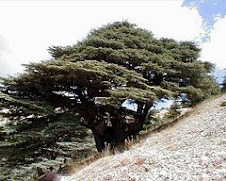Update at 11:10 a.m. ET: The Times-Picayune says a railroad bridge was left in the down position, helping boost water levels inside the canal. "What we're seeing is small overtopping, white caps,"Col. Al Lee, the Corps' local commander, tells the paper.
Original posting at 11 a.m. ET: The Times-Picayune just posted a photo that shows water flowing over a levee along the Industrial Canal in the Upper Ninth Ward of New Orleans. Earlier, the paper reported that three vessels broke loose in that canal.
Mayor Ray Nagin tells WDSU-TV that levees along the Industrial Canal are being overtopped by the Hurricane Gustav storm surge. Water level at the canal was being measured at more than 11 feet high, according to Army Corps of Engineers data. The flood walls there are 11 feet high.
Overtopping levees is much less alarming than levee breaches, Nagin said.

(Photo by Lee Celano, Reuters.)
NOLA.com: Water coming over Industrial Canal floodwall
by The Times-Picayune
Monday September 01, 2008, 9:07 AM
The Army Corps of Engineers confirms that water is lapping over the Industrial Canal floodwall. Water is coming over the top in waves. Levee and Corps officials are assessing the floodwall.
The L & N railroad bridge across the Industrial Canal is in the down position, said Mark Lambert, a spokesman for the state Department of Transportation and Development. That bridge is owned by the Port of New Orleans, but Lambert said DOTD has offered to send teams to the area to help raise the bridge.
Engineer Bob Turner, executive director of the East Bank Regional Levee Authority, said the bridge is causing a 3-foot backup of water in the canal. Turner has been in contact with the port and DOTD authorities about raising the bridge but it the controls are underwater.
Bonura said the bridge, built in 1919, is only able to handle winds up to 45 miles an hour, which means it cannot weather a hurricane in an upright position.
"Really, the public safety concern is that if it were raised during hurricane-force winds, the bridge could become unstable and fall on the floodwall or levee," Bonura said.
He also said that at the moment, there is no way to raise the bridge because the controls are under water and equipment can't be moved to the area.
It is the Port's usual protocol to keep these old railroad bridges in the down position during a hurricane, Bonura said. The canal is designed with that factor in mind, he said.
Col. Al Lee, New Orleans district commander of the Army Corps of Engineers, also said the wind is blowing water over the floodwall. "What we're seeing is small overtopping, white caps," he said. "The water is about 1 foot below the top of the wall. They say those walls have been significantly strengthened since Katrina and have slope paving to help prevent erosion."
St. Bernard Parish Sheriff Jack Stephens and Parish President Craig Taffaro were on the Claiborne Avenue bridge, checking the water levels. Water was lapping over the wall on the Upper Ninth Ward side, but had not yet overtopped the side closest to the Lower Ninth Ward.
"It's better than seeing cement collapsing but it's not good," Taffaro said.
"We're worried about the pressure building up on this wall," he said pointing at the corner of the floodwall nearest to the Claiborne Avenue Bridge.
Full article: NOLA.com on water over Industrial Canal by Ninth Ward, New Orleans



No comments:
Post a Comment